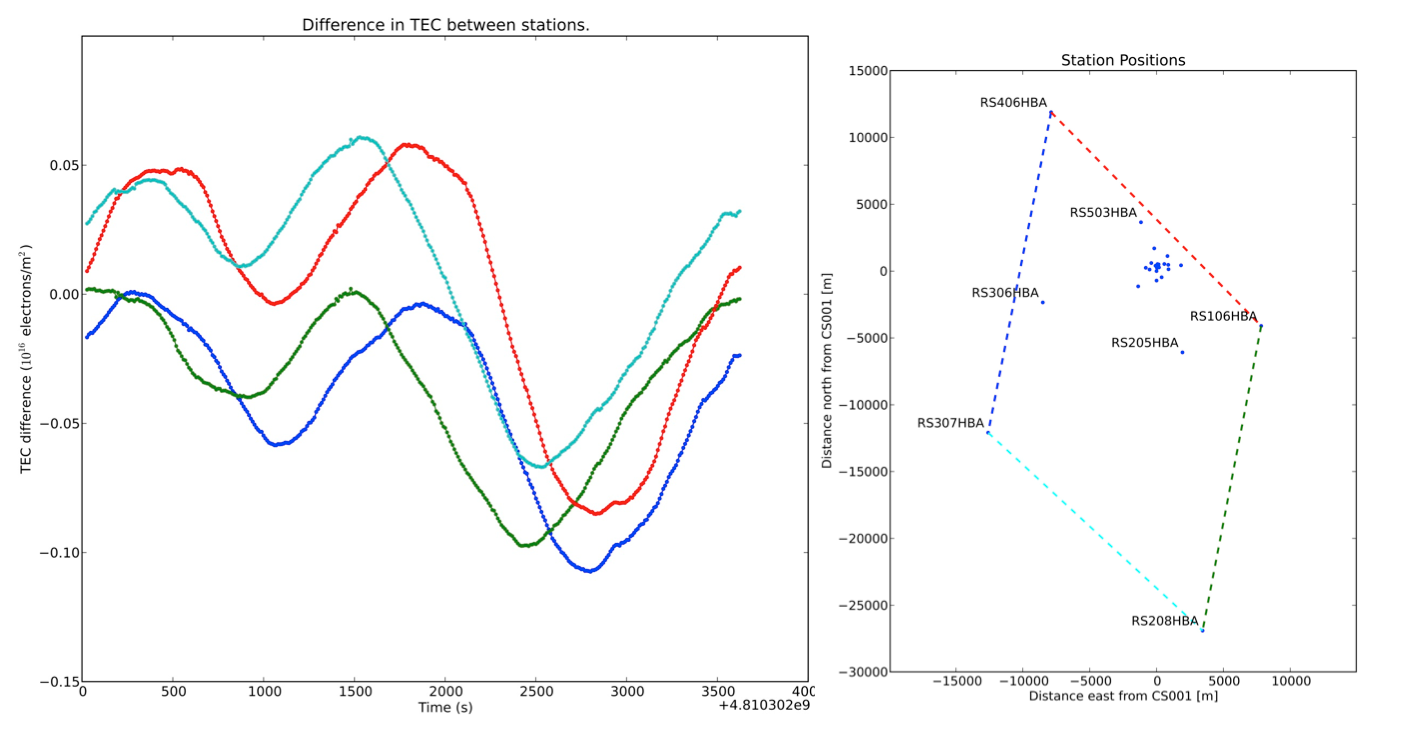Daily Image
14-09-2011LOFAR detects ionospheric wave
| Submitter: | Ilse van Bemmel |
| Description: | LOFAR is the most sensitive instrument to date to study the Universe at low radio frequencies. However, the signals it receives are distorted by the higher layers of the Earth's atmosphere, the ionosphere. It causes radio sources to move and be distorted while we look at them, just like stars do in visible light. This is a serious issue, but we can reverse the problem and use the unprecedented sensitivity of LOFAR to study the ionosphere at kilometer scales. This information can then be used to apply corrections to the observations and obtain high quality images. As part of his summer student project at ASTRON, Mark Aartsen has used LOFAR observations of the bright radio source 3C196 to do exactly that. Isolating the signals received by four of the most distant stations that LOFAR has at the moment, we clearly detect a wavelike pattern over each of the baselines. In the figure on the left, each colour corresponds to the baseline with the same colour on the right. We note that the cyan and green baselines detect the peak of the wave before the blue and red baseline. This indicates that the wave is traveling along the longest axis of the diamond shape, roughly from south to north. This is the first time that we have unambiguously detected an ionospheric wave over LOFAR. We can use the 2-dimensional layout of the 4 baselines to derive estimates of the physical properties of this wave. The delay between the blue/red and cyan/green baseline pair is ~300 seconds. The baseline length is ~20km each. This implies the wave travels 20km in 5 minutes, which is 240 km/h. Roughly half an hour passes between two wave peaks, so the wavelength is ~120 km. This is consistent with known traveling ionospheric disturbances. |
| Copyright: | Mark Aartsen |
| Tweet |  |
